Why you can trust Tom's Hardware
Test Notes
We list the test system particulars at the bottom of the page. All third-gen Ryzen entries with "PBO" indicate an auto-overclocked configuration with DDR4-3600 memory, while the Ryzen 5 3400G has an 4.2 GHz all-core overclock paired with DDR4-3466 memory. Intel's overclocked configurations also use DDR4-3600.
Integrated GPU Testing
Intel didn't sample us the Core i3-9350KF, so we had to turn to retail to find a chip. And it wasn't easy. We couldn't find a GPU-infused Core i3-9350K at retail, much like we couldn't find a Core i5-9400 for sale, leading us to purchase the graphics-less models instead.
That leaves us with a problem, though: We need to test Intel's largely nonexistent low-end processors that come with integrated graphics against the capable Ryzen 5 3400G (AMD's flagship APU) that serves as an alternative to the 9350K/F.
The 9600K represents our lowest-end Coffee Lake processor with the UHD Graphics 630 engine, so we're subbing it in for these tests. We used the latest graphics drivers available for both processors as of the publication date. Be aware that the 9600K has access to more processing grunt power in the CPU cores than the 9350KF, which comes with a hefty price increase. That means this technically isn't a fair fight, but it doesn't really matter.
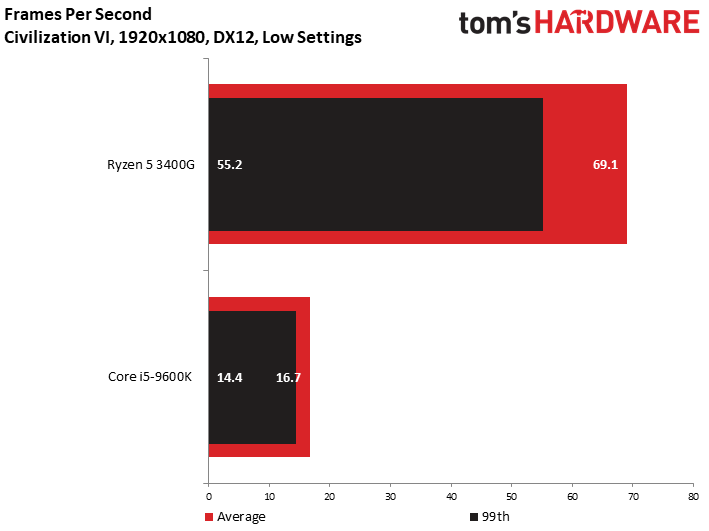
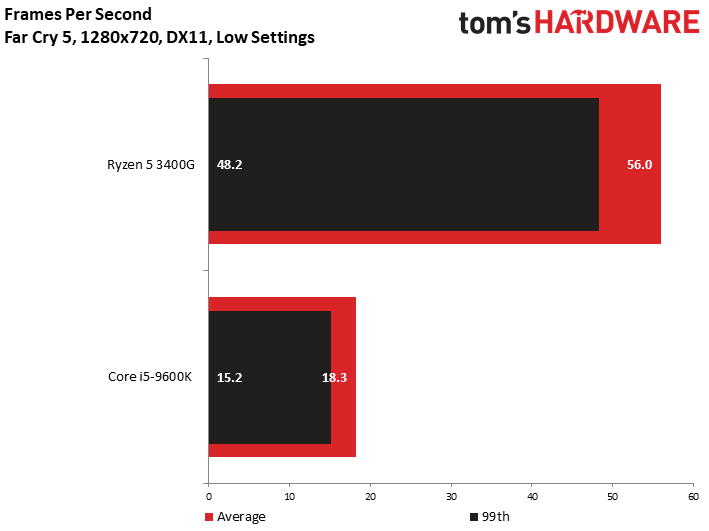

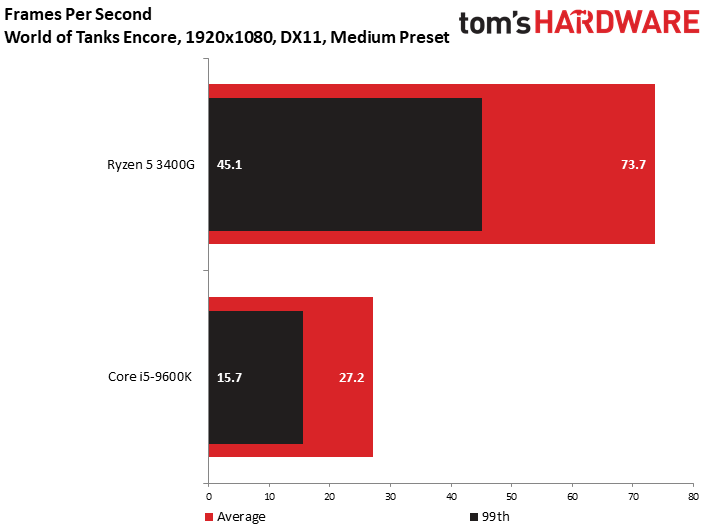

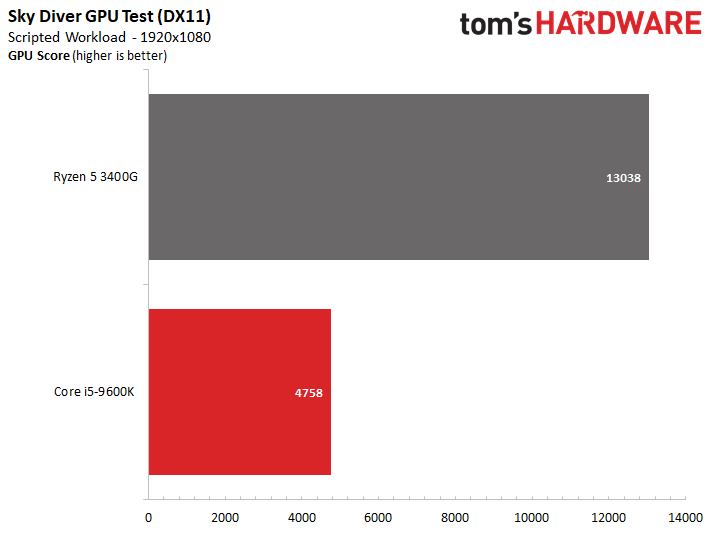
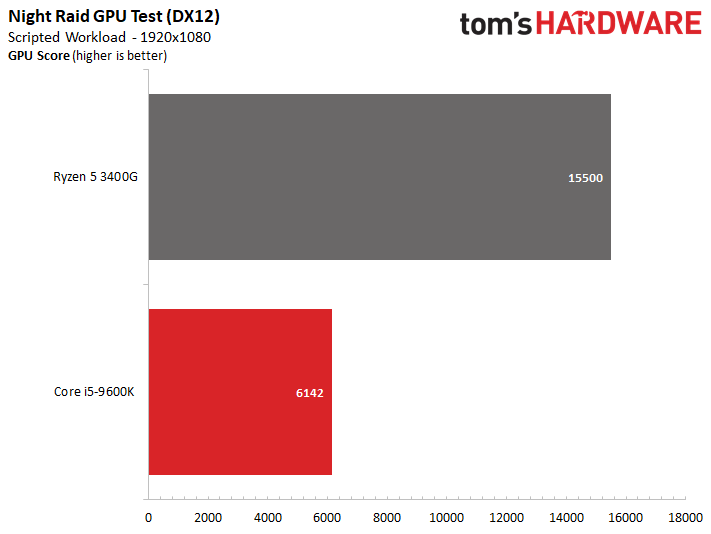
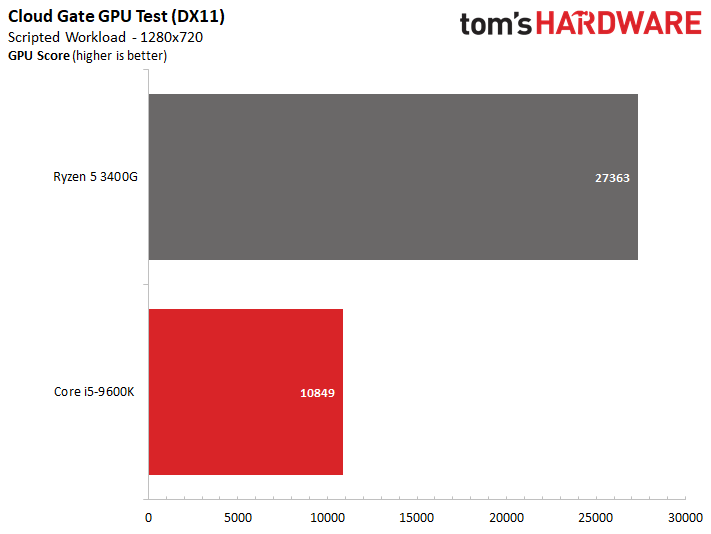

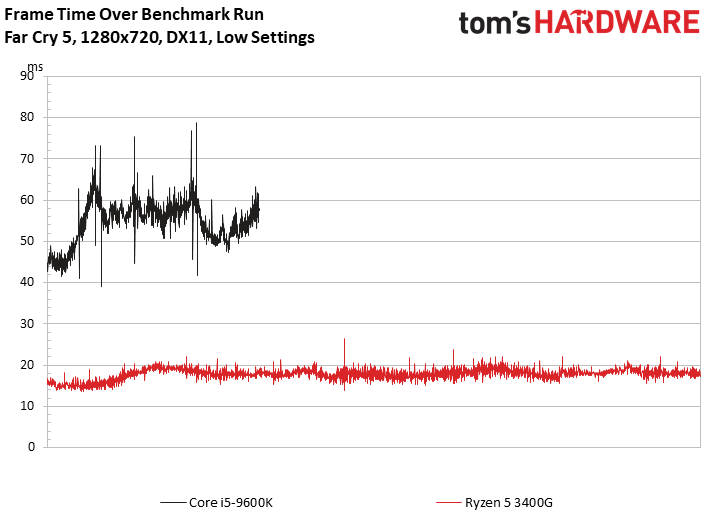


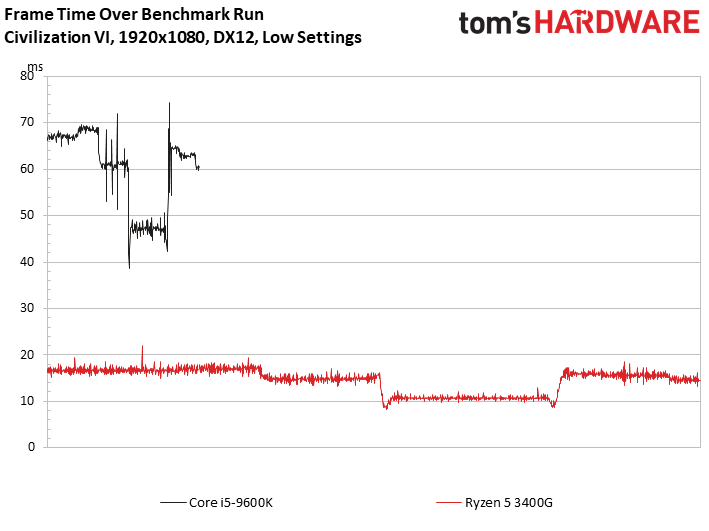




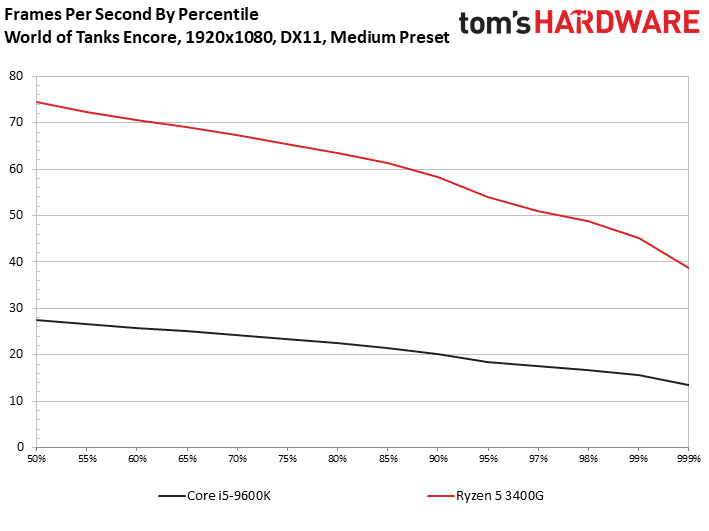
If you're planning on a build that leverages integrated graphics for low-end gaming, the Ryzen 5 3400G is obviously the best solution. However, you'll have to accept the lower performance in applications (outlined on the following page).
Intel's processors are a bit more adept at less demanding eSports games, but the same applies to the Ryzen 5 3400G. Also note that we aren't including overclocked results with the 3400G for this brief glimpse, but stay tuned for our full review.
VRMark and 3DMark

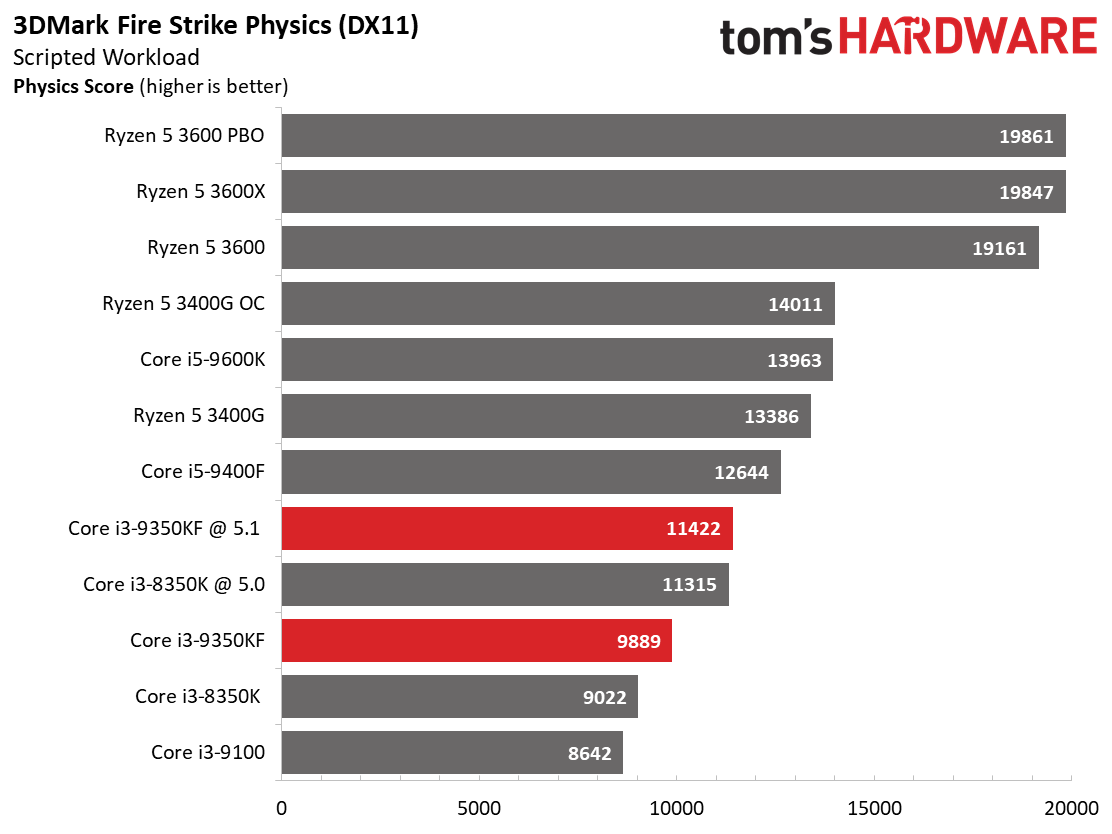
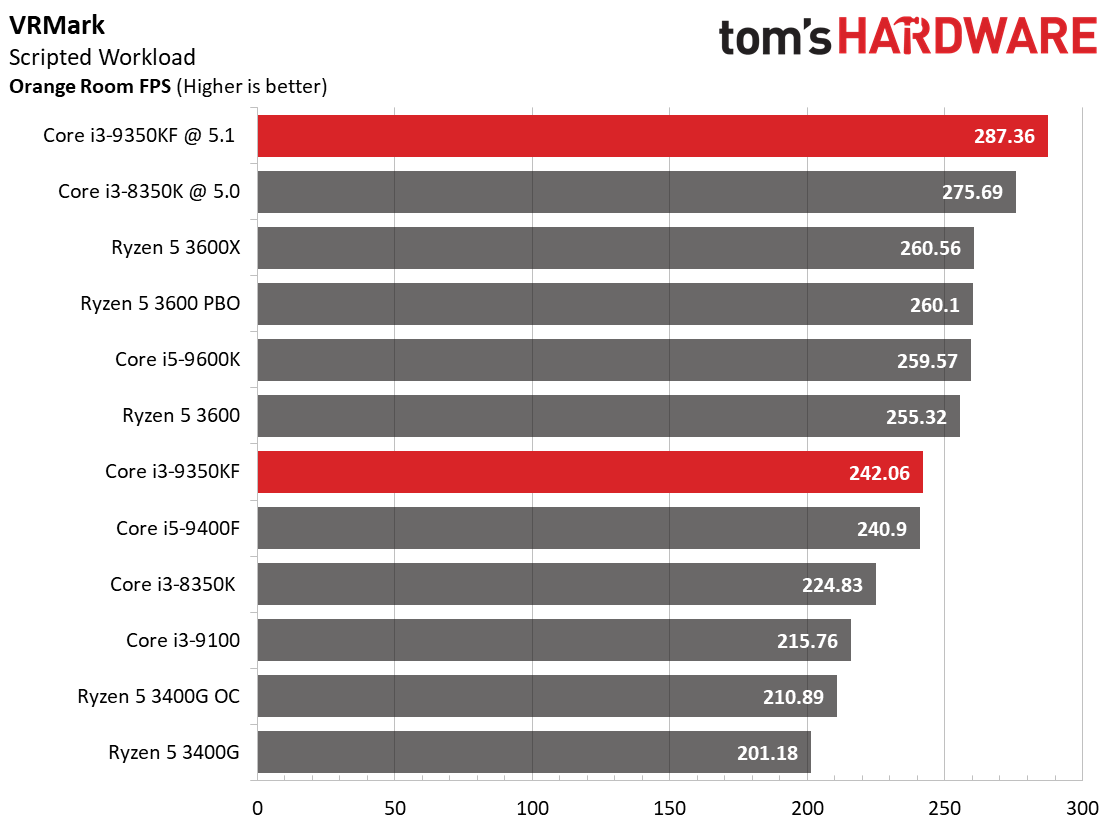
Synthetic gaming benchmarks often aren't indicative of real-world performance, but the 3DMark DX11 and DX12 tests measure the amount of raw computational horsepower exposed to the game engine. For now, most of today's game engines don't scale as linearly with additional compute resources, but these tests help us gauge how games could exploit processing resources as the engines become more sophisticated.
Get Tom's Hardware's best news and in-depth reviews, straight to your inbox.
The Ryzen 3600-series models exploit their heftier allotment of threads to take easy wins in the DX11 and DX12 tests, even outstripping Intel's Core i5-9600K with its six threads backed by physical cores. It's no surprise, then, to see the 9350KF suffer at the hands of its quad-core quad-thread design as the less-expensive Ryzen 5 3400G matches it at stock settings in the DX12 tests and beats it handily at both stock and overclocked settings in the DX11 test. Meanwhile, the Core i5-9400F, Intel's similarly-priced chip that comes with two additional cores, also beats the 9350K convincingly in these heavily-threaded tests.
The 9350KF redeems itself in the VRMark test, which prizes per-core performance (a mixture of frequency and IPC). We see that the 9350KF outpaces its predecessor, the 8350K, at stock settings by a large margin due to the addition of its 4.6 GHz boost clock.
Civilization VI AI and Stockfish
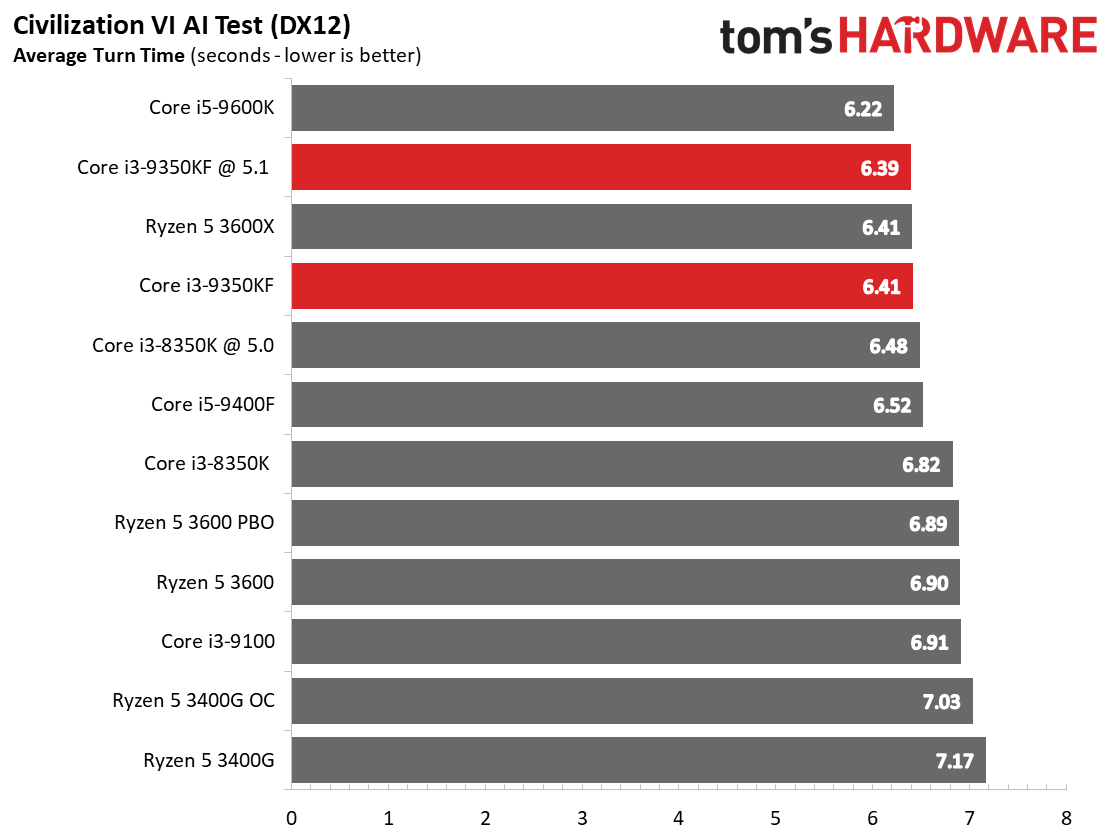
Civilization VI prizes per-core performance, so it isn't surprising to see the Intel chips take the lead in this test of AI engine performance in a turn-based strategy game. The stock Ryzen 5 3600X is very competitive, however, with the Core i3-9350KF.
Stockfish, an open-source chess engine, is designed to extract the utmost performance from many-core chips by scaling well up to 512 cores. That scalability plays well to AMD's threaded heft as the 7nm Ryzen 5 3600X and 3600 take a massive lead over the Core processors. The 12nm Ryzen 5 3400G also proves competitive with its four cores and eight threads.
Ashes of the Singularity: Escalation
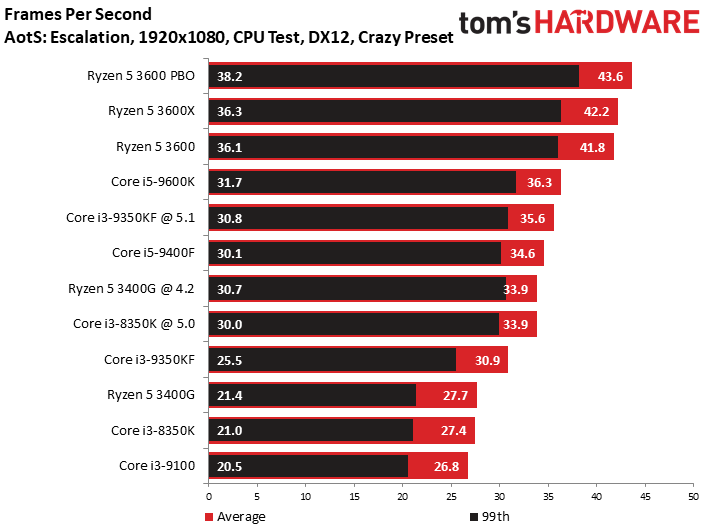


Ashes of the Singularity: Escalation loves cores and threads, but clock rates obviously play a role. The 9350KF is surprisingly agile after tuning, nearly matching the six-core -9600K. We also see a notable gain over the previous-gen 8350K, and the stock 9350KF leads the Ryzen 5 3400G. However, overclocking pushes the Ryzen 5 3400G to a tie with the 9350KF.
Civilization VI Graphics Test

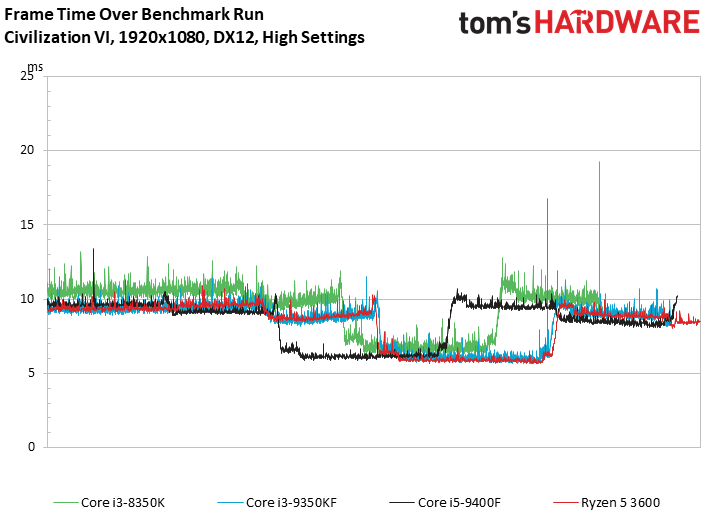
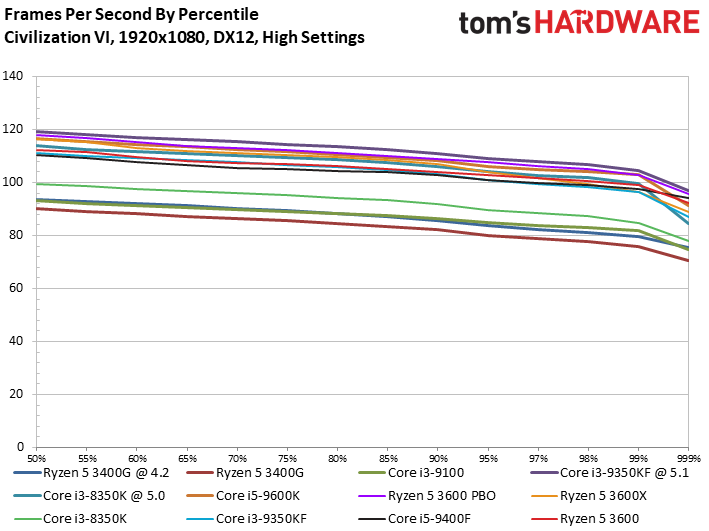
Civilization VI is known for its preference for high clock rates, and here we can see the overclocked 9350KF profit with a commanding lead over the rest of the test pool, but its notable that the 9600K would pull ahead after similar tuning efforts. The Ryzen 5 3600 beats the 9350KF at stock settings, and tuning brings it within competitive range. The small delta between the tuned chips won't be noticeable to most gamers at the FHD resolution.
We do see another big gen-on-gen performance bump for the 9350KF, and the Ryzen 5 3400G, which uses the first-gen Zen architecture and the 14nm process, lags the rest of the pool.
Dawn of War III
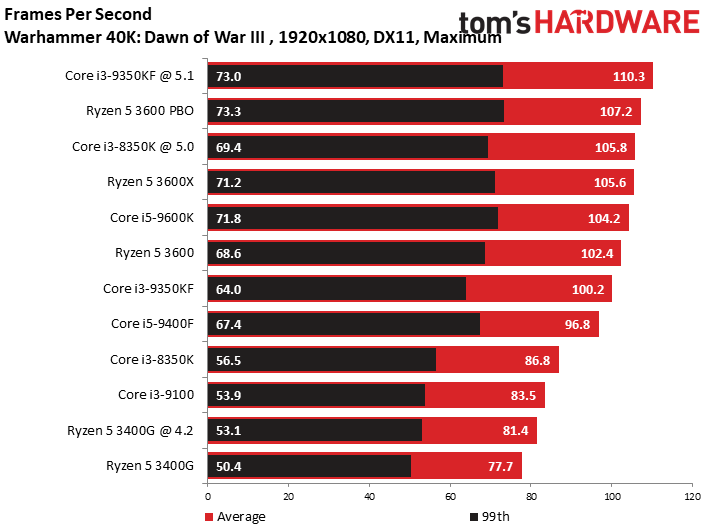
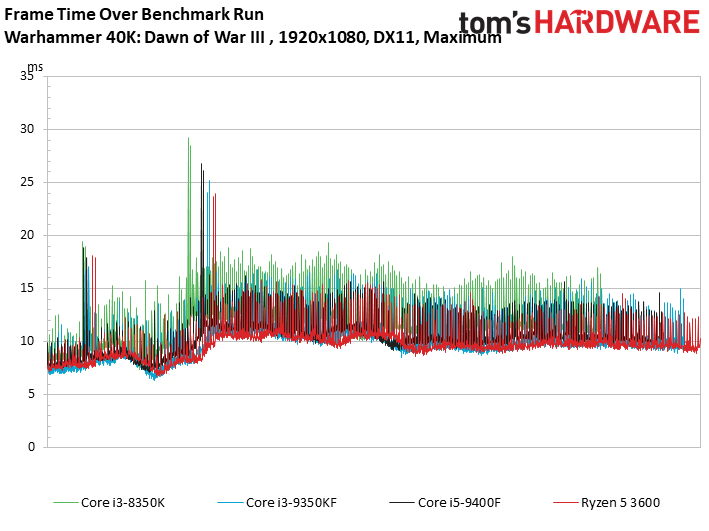
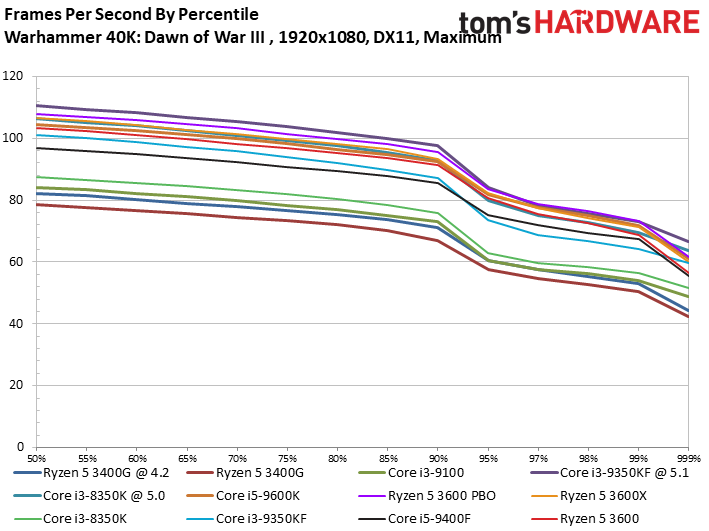
The Warhammer 40,000 benchmark responds well to threading, but it's clear that Intel's clock speed advantage has an impact. The 9350KF's Turbo Boost feature pays off in this title as the chip registers another big generational performance gain, even beating the six-core 9400F at stock settings. Tuning gives it the lead in these tests, but the Ryzen 5 3600 is again impressive after tuning.
Far Cry 5


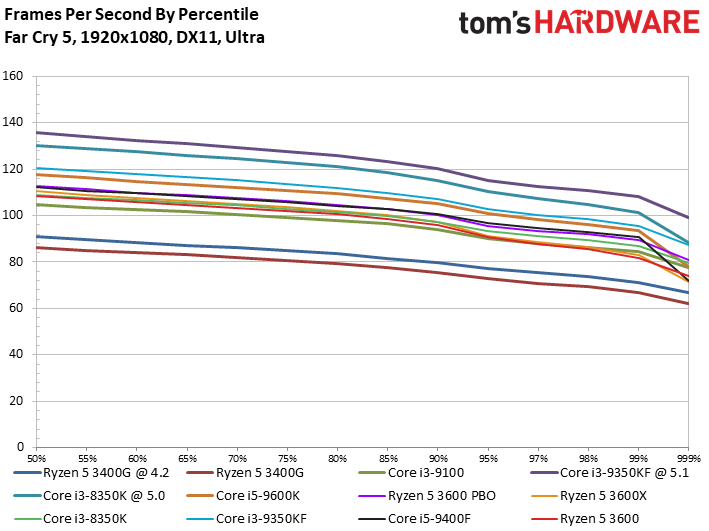
The now-familiar pattern emerges of the 9350KF taking the overall lead after tuning. You'll notice the black spikes in the frame time over benchmark run, which come as a result of some variability from the 9400F during the test. These scattered periods of variability don't impact our 99th percentile measurements in the bar chart, but manifest as lower performance in 99.99th percentile of frames (the final chart of the series). This manifested as visible stutters during game play.
Final Fantasy XV
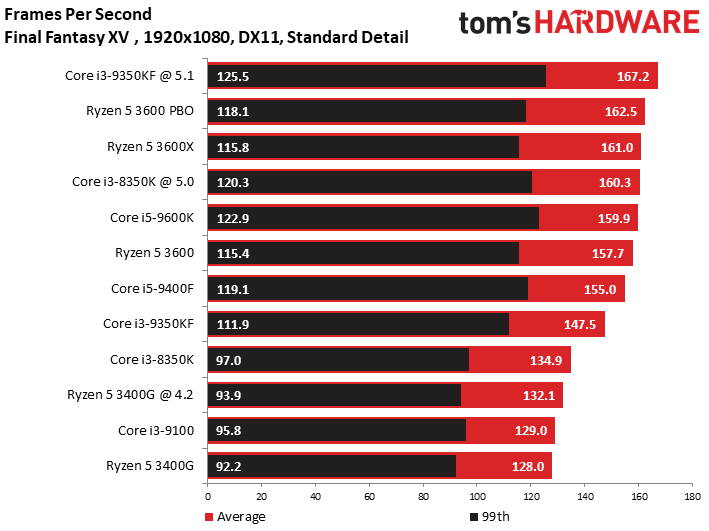
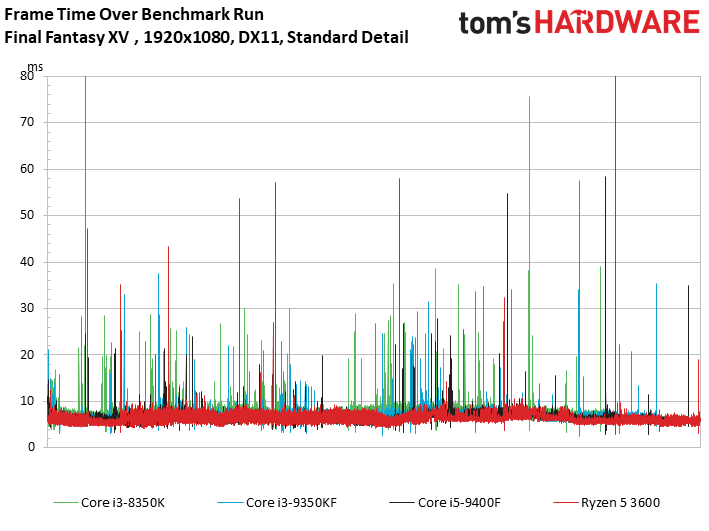
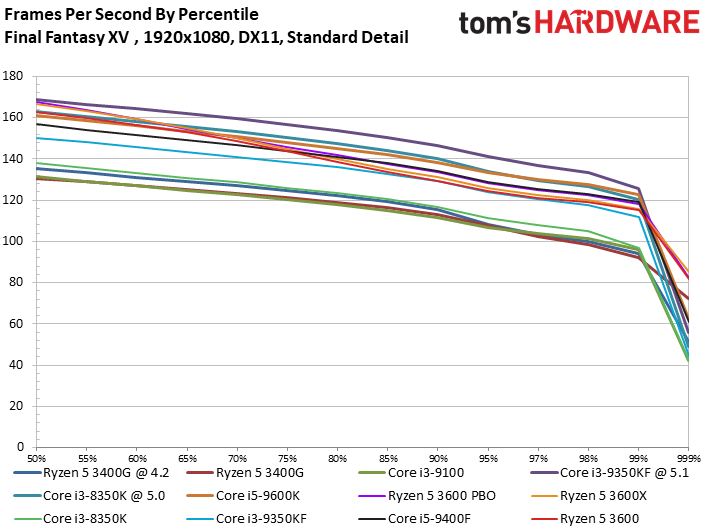
We run this test with the standard quality preset to sidestep the impact of a bug that causes the game engine to render off-screen objects with the higher-resolution setting. The second-gen Ryzen 5 processors don't take the absolute lead in this test, but the real-world differences are slight.
Hitman 2
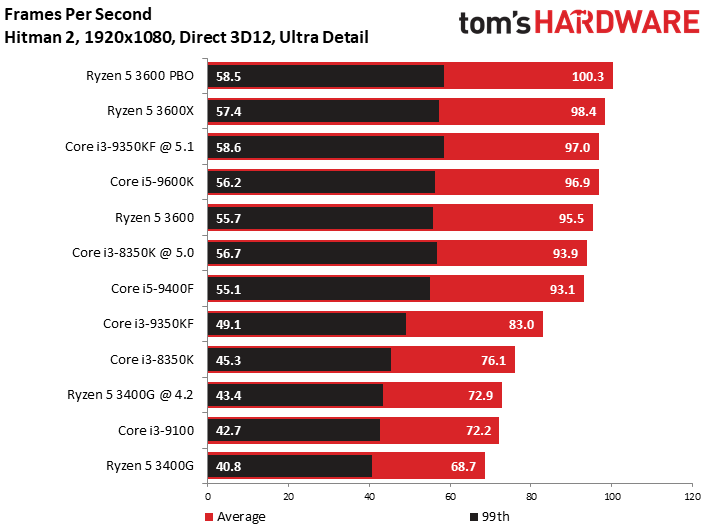
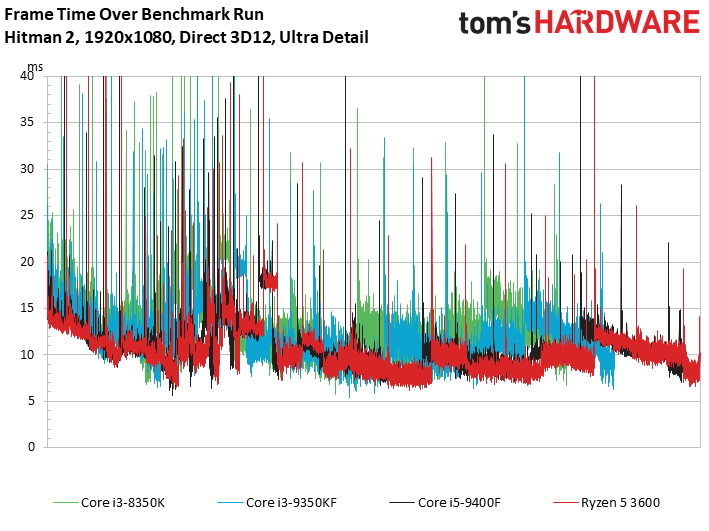
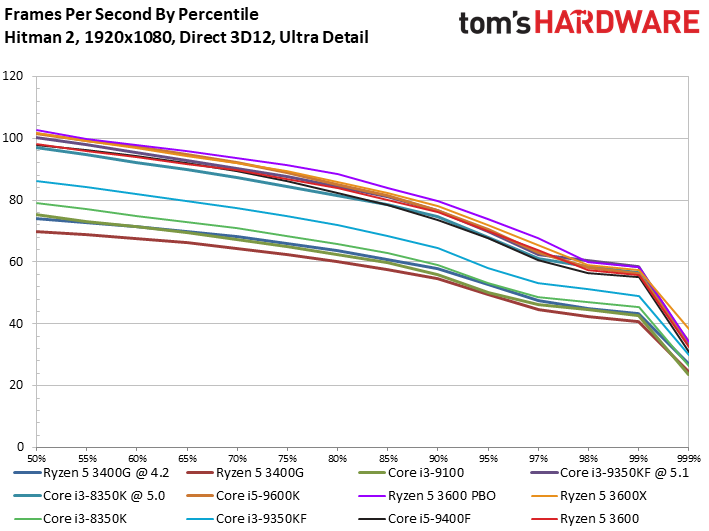
The Ryzen processors are more competitive during the Hitman 2 benchmark as the Ryzen 5 3600 and 3600X unseat the Core i3-9350KF to take the top of the chart. Both chips easily outpace the 9350KF in stock trim, too.
Project Cars 2

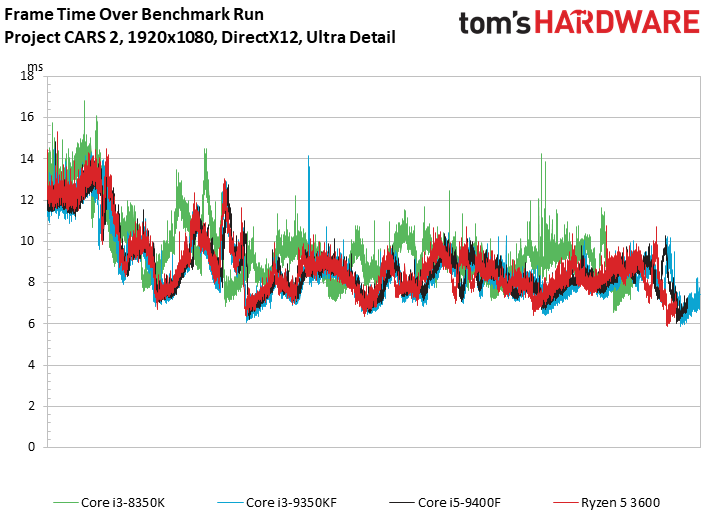
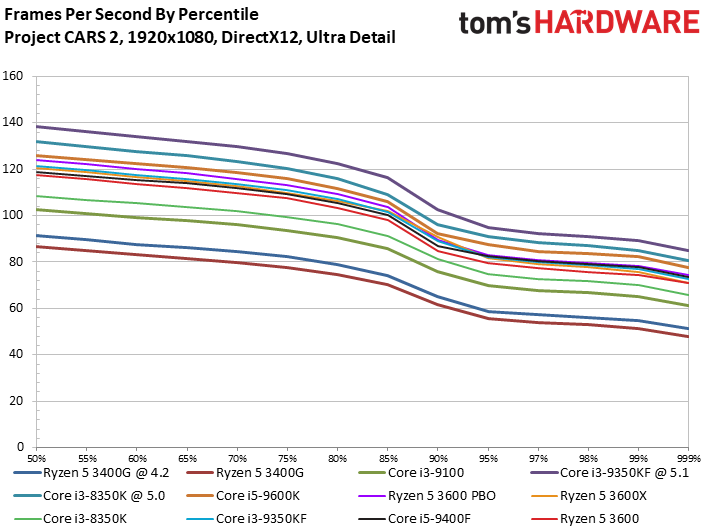
Although Project CARS 2 is purportedly optimized for threading, clock rates obviously affect this title's frame rates. Intel's per-core performance advantage in this title pays big dividends, particularly after tuning.
World of Tanks enCore

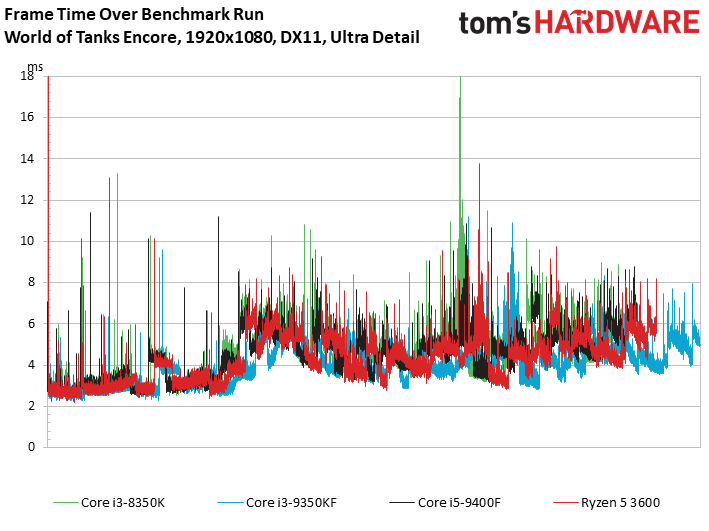
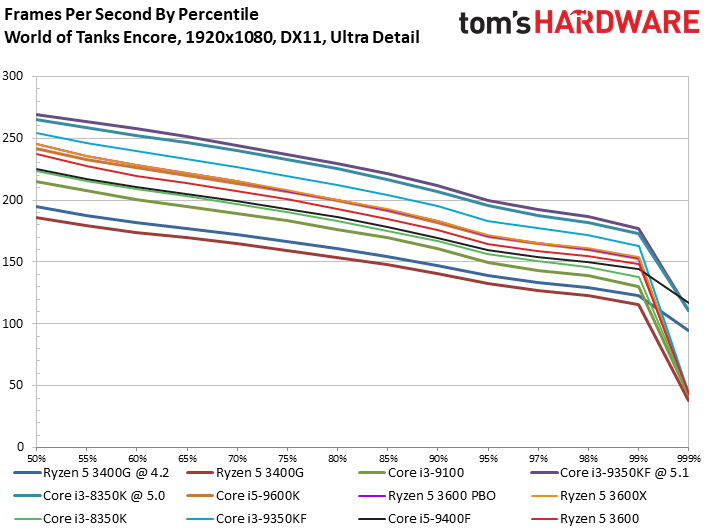
The World of Tanks benchmark doesn't hold any surprises, with performance trending within our expectations.
MORE: Best CPUs
MORE: Intel & AMD Processor Hierarchy
MORE: All CPUs Content
Current page: Core i3-9350K Gaming
Prev Page Battle for the Low-End Next Page Core i3-9350K Application Performance
Paul Alcorn is the Editor-in-Chief for Tom's Hardware US. He also writes news and reviews on CPUs, storage, and enterprise hardware.
-
g-unit1111 Is there any point in buying a 4/4 CPU on a platform that is becoming increasingly outdated anymore? Even for an office machine, a Ryzen 3400G is a more attractive CPU at that price.Reply -
Co BIY I would like to see some comment from the reviewers on the "snappiness" of the machines when powered by the various processors when doing various routine tasks. Do any of the benchmarks capture the "drive responsiveness" of the machine.Reply
I imagine that most those buying the lower end processors will be doing routine computer work like web browsing, word processing ect... I see that as the perfect use case for a very fast low core count processor. Feels fast in normal home/office use at a low cost. -
logainofhades Seeing recent reviews from GN, tech deals, and Hardware Unboxed, I am convinced 4 core/4 thread gaming, is essentially dead, at this point, unless you only play old titles that don't need more than 2-4 cores. The six core Ryzen 5's still keep going, where the i3 and i5 intels run out of steam, due to insufficient resources, being limited to 4 and 6 core without hyperthreading.Reply -
g-unit1111 Replylogainofhades said:Seeing recent reviews from GN, tech deals, and Hardware Unboxed, I am convinced 4 core/4 thread gaming, is essentially dead, at this point, unless you only play old titles that don't need more than 2-4 cores. The six core Ryzen 5's still keep going, where the i3 and i5 intels run out of steam, due to insufficient resources, being limited to 4 and 6 core without hyperthreading.
Yeah especially when you can get a 2nd gen Ryzen CPU for ridiculously cheap right now. Even the 3rd gen CPUs are still a relative bargain compared to their Intel counterparts. -
Giroro Replylogainofhades said:Seeing recent reviews from GN, tech deals, and Hardware Unboxed, I am convinced 4 core/4 thread gaming, is essentially dead, at this point, unless you only play old titles that don't need more than 2-4 cores. The six core Ryzen 5's still keep going, where the i3 and i5 intels run out of steam, due to insufficient resources, being limited to 4 and 6 core without hyperthreading.
I've been under the assumption that games are being optimized for 8 threads, because of the consoles.
I'll need to look into if 4c/8t outperforms 6/6 at gaming to see if that's true, even though 4 hyperthreaded cores are usually going to be worse than 6 physical cores at overall number crunching.
I wonder how console-comparable pre-ryzen 8-weak-core AMD processors hold up with modern games compared to 4 fast cores. -
ScrewySqrl ReplyGiroro said:I've been under the assumption that games are being optimized for 8 threads, because of the consoles.
I'll need to look into if 4c/8t outperforms 6/6 at gaming to see if that's true, even though 4 hyperthreaded cores are usually going to be worse than 6 physical cores at overall number crunching.
I wonder how console-comparable pre-ryzen 8-weak-core AMD processors hold up with modern games compared to 4 fast cores.
Anecdotally, I'm seeing a lot of "FX-8350 or better" in the 'recommended' listing of $50-60 games on Steam, so I'm guessing those older 8 cores are working better now that things are optimized for 8 cores. -
logainofhades ReplyGiroro said:I've been under the assumption that games are being optimized for 8 threads, because of the consoles.
I'll need to look into if 4c/8t outperforms 6/6 at gaming to see if that's true, even though 4 hyperthreaded cores are usually going to be worse than 6 physical cores at overall number crunching.
I wonder how console-comparable pre-ryzen 8-weak-core AMD processors hold up with modern games compared to 4 fast cores.
Games are starting to use more threads, because of Ryzen, really. Hence Intel finally pushing core counts higher, across all product lines. I would expect a 6c/6t to do better, than a 4c/8, but still suffer from frametime issues, a 6c/12t CPU like an intel 8700k, or a Ryzen 5 3600, would not. -
mdd1963 Just how many times can the 7600K be recycled, bumped up 100 MHz, given a new name, and called 'new'....Reply
This processor should be $59 , and a questionable purchase even then, but, it is NEVER worth $180+....(Intel, trim it's price by 60-70% , pronto..!) -
mdd1963 The review actually discusses the advantages of PCI-e 4.0? Honestly, with no GPUs yet available using it, and, I rather doubt anyone pondering this rig or an R5-1600 or less is pondering the latest NVME 4.0 drive on an X570 onslaught at 50-70% increased NVME storage cost but often an actual .1% longer 50 GB file transfer vs. the 970 EVO in real world testing.Reply -
logainofhades Replymdd1963 said:The review actually discusses the advantages of PCI-e 4.0? Honestly, with no GPUs yet available using it, and, I rather doubt anyone pondering this rig or an R5-1600 or less is pondering the latest NVME 4.0 drive on an X570 onslaught at 50-70% increased NVME storage cost but often an actual .1% longer 50 GB file transfer vs. the 970 EVO in real world testing.
While the are not taking advantage of the bandwidth, AMD's NAVI cards are PCI-E 4.0. X570 is not compatible with 1st gen Ryzen. Only a 3rd gen CPU, with an x570, gets you PCI-E 4.0. I do agree that PCI-E 4.0, is not really necessary, for the average user, at this time.